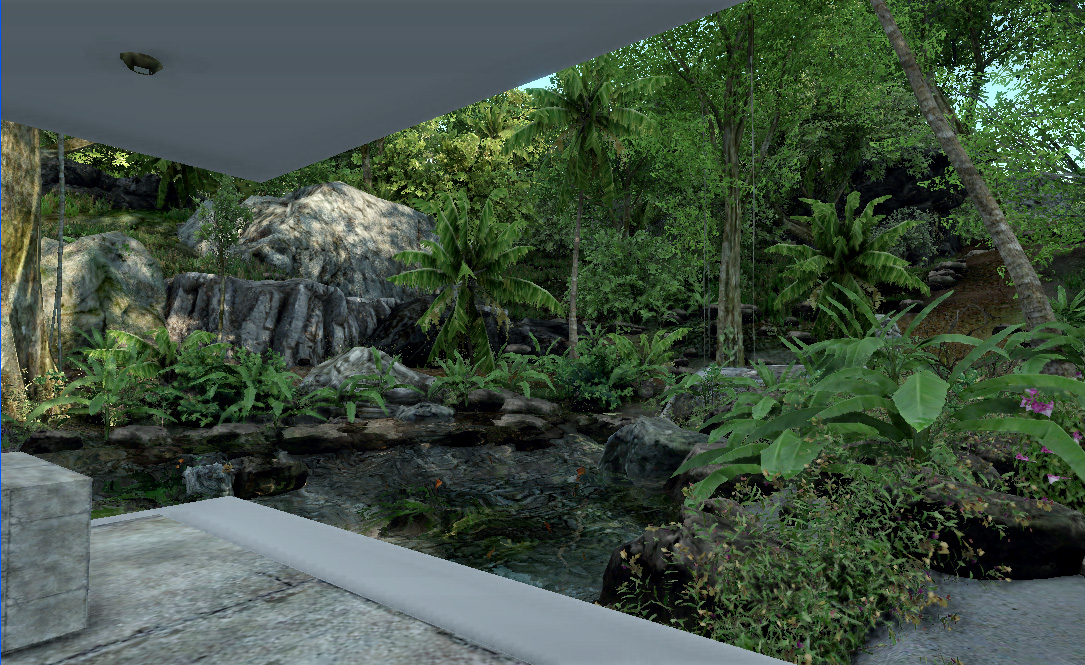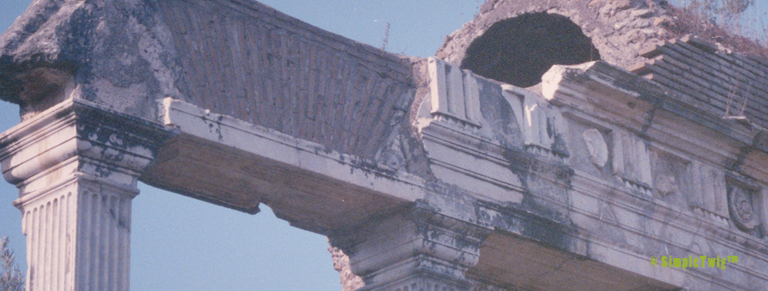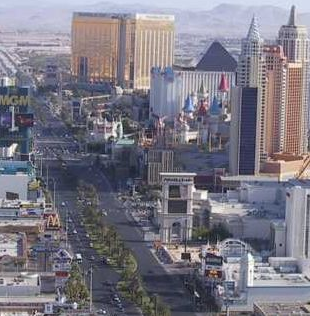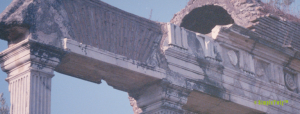Robert Venturi, Denise Brown and Steven Izen’s book ‘Learning from Las Vegas‘ makes an argument for finding order with in an apparently chaotic urban environment and using this supposed gained knowledge as justification for design. It has been a long time since I read that book, but essentially he creates figure/ground diagrams of a variety of components about that city, like patterns made from cars, roads, telephone poles (actually I should be taking a quick look at the book to be sure of my examples, but hey, don’t have the time). The impression the book gave was that ‘disorder’ can have an underlying order which is ‘okay’, opening opportunities for design.
The problem is, humans do not visually experience urban environments from a ‘figure/ground’ perspective and their experience of Las Vegas is ultimately a cluttered and chaotic one. Most people will, in very chaotic environments, pick out landmarks… a sign, an intersection, etc. that they become familiar with and thus eliminate the chaos of that node in order to make sense of the rest of their context, so that they might continue. As environments become more chaotic with signage, telephone poles, advertisements, billboards, un-defined roads, etc. one has the tendency to ‘speed up’ in order to get to one’s destination safely and thus feel assured of the success of their ‘travel’. This is not the role of an Architect or Urban Planner, to accept chaos as part of a ‘good urban experience’. In fact, these environments are typically considered disposable as time proves when edifice after edifice gets torn down and rebuilt.
The role of Architect is to help people make sense of their environment… to create order. They must understand the responsibility of their project to the community, that is, is their project a context building or a focal point building. As a context building it is important to enhance the existing context which reinforces the identity of a neighborhood or community. As a ‘focal point’ building, it is important to stand out as a representative of the communities spirit. While both context and focal point buildings can have elements of each, it is fundamentally important that they fulfill their roles in bringing order, enhancing our human experience, instilling pride and providing balance within our built environments. It is these qualities that will yield more enduring architecture and enhance our life’s experience.
Landmarks has moved towards reinforcing our ‘context’ structure of our communities. This is a good thing but even here, there should be a fundamental understanding that even in Landmarks districts there is a need for counter points and juxtapositions. Boston is proof that balancing high quality architecture, whether old or new can yield a healthy city life and a community proud to be a part of it.
Now, with all that said, Las Vegas itself has certain qualities given the developments over the last 16 years, that is, structures that are large enough to ‘hold their place in the composition’ and together create a collage of parts who’s diversity itself creates continuity. Unfortunately this attitude is applied to small villages, towns and struggling cities who’s real goal should be to emulate a gambling city, but to find their own place amongst quality cities in order to compete and thrive. But for Las Vegas the overall patchwork of buildings makes me think there’s a convention of 1970’s polyester business people all decked out in their best ‘designer shirts.’ In the end it is us people who decide how our built world will look like but given the diversity of individuals making the decisions, who’s goals vary from money grabbing to conscientious effort, ‘quality’ will continue to be elusive.
This is where zoning has attempted to step in, to provide certain guidelines to create some consistency. Where that has failed some newer communities have enacted their own rules governing everything from paint colors to placements of mail boxes which unfortunately results in communities that are time capsules of a particular period. So what’s the solution? Zoning is fundamental and a ‘first wash’ in the watercolor technique that paints our cities. Then each neighborhood must define what materials and colors they will accept, and create for themselves a color palette that will allow for freedom of expression in form but will result in a uniformity that will help define the entire composition. They also need to bluntly say what is not acceptable and have examples on hand, because without those examples the young designer all filled with good intention will certainly make a blunder.
And we have the ‘code’. A set of laws governing the minimum requirements. For some designers and developers, they take the code as a book for design. It not only assures them of what to do, in the case where they don’t fully understand design, but allows them to stay legal and acceptable. Of course the code must be met, but it was never intended to be the defining force behind design. And cities must acknowledge those designers that create beautiful buildings and mark those who can only design by code or do so for politics (as the designers intent should always be ‘how can I make this structure great?’ and not ‘what do I think my client wants’). For the latter, those people who essentially design ugly, they should not be awarded city, state or federal contracts. It’s time we take control of the money invested in our built environment so that generations to come can live in a quality world. The money is already being spent on buildings that are ugly, why not make them beautiful with the same amount of money?
Ultimately places like Las Vegas set an example that other cities have followed. That is part of our human experience, that we are swayed by examples set by others, which has lead to many towns and cities in America having a very poor cohesive feel to them.
This is in part to our ties to vehicles and how our experience is tied to the road, and how buildings relate to that set of circumstance. Unfortunately the roads themselves are typically designed by engineers and thus the core of our American experience starts there. It’s time we took control of our world and if need be start with the city street and work towards the lot and building. We should view our built environments from the view point of the user, like the Greeks did with their Acropolis’s. In fact if they could do it, why can’t we. They designed from the user’s point of view, from what they could see with their eyes so that the entire composition would be harmonious. For while we need things that are utilitarian, no one really wants to live in a utilitarian place. We all want to live in a beautiful place and the cost is actually no different than if designed by an engineer alone. Let’s stop letting them be the measure of our standards, and lets stop looking at places like Las Vegas as our example. Quality is attainable with the same effort but an effort that is directed in the right direction.
This image, taken by Nick Buccalo, is of a portion of Hadrian’s Villa and illustrates the notion that architecture is layered of varying components, each fully succeeding at their given task, to create a beautiful whole. One, architects, can learn much from putting what exists in perspective and applying the lessons they learn in appropriate ways. Notice how the Romans mastered the flat brick arch, the veneer,the barrel vault with buttressing masonry to eliminate outward movement, and of course their special volcanic concrete, lightweight and extra strong.



